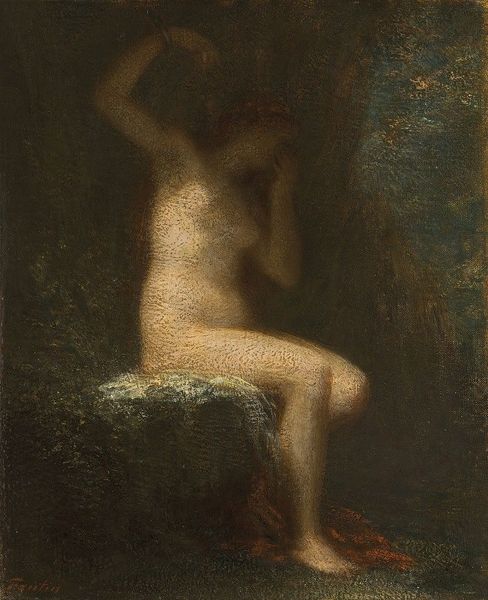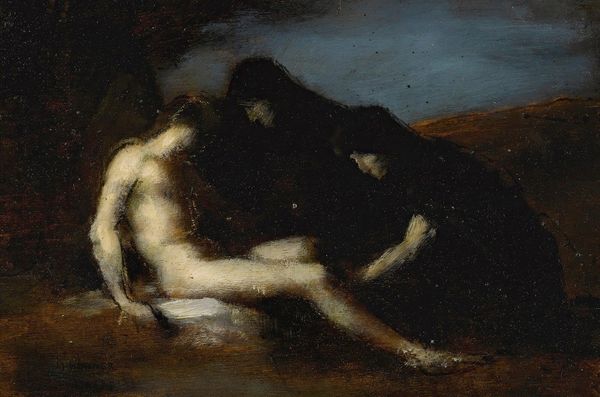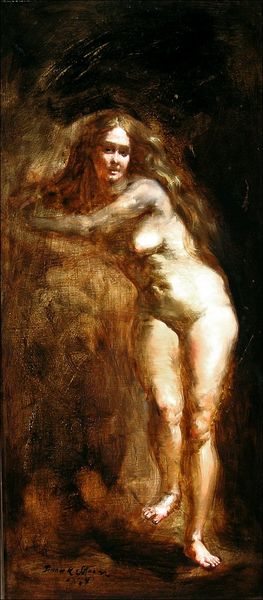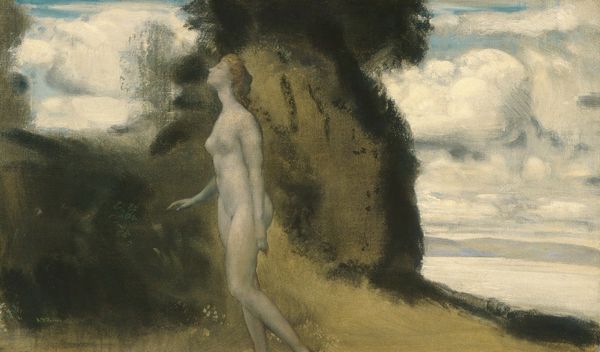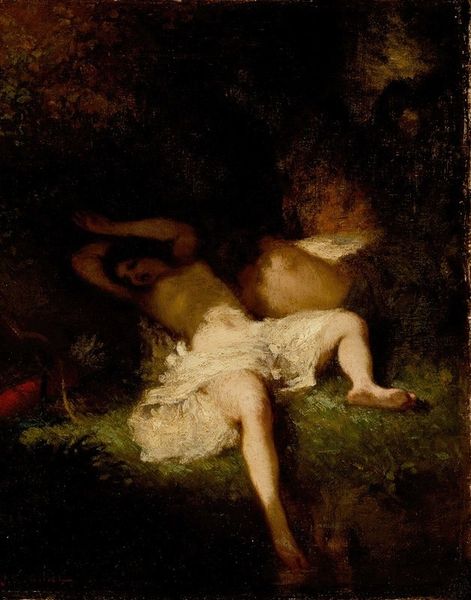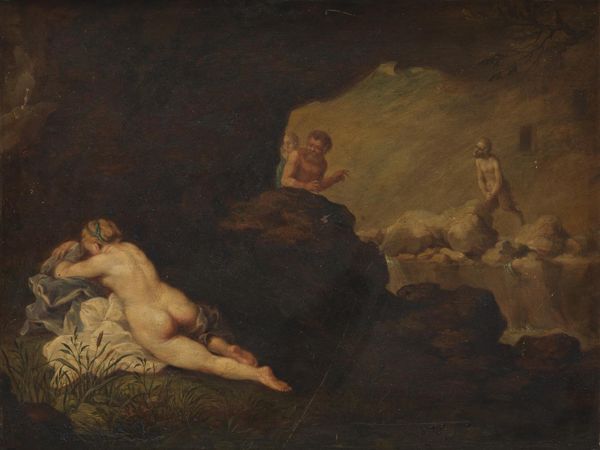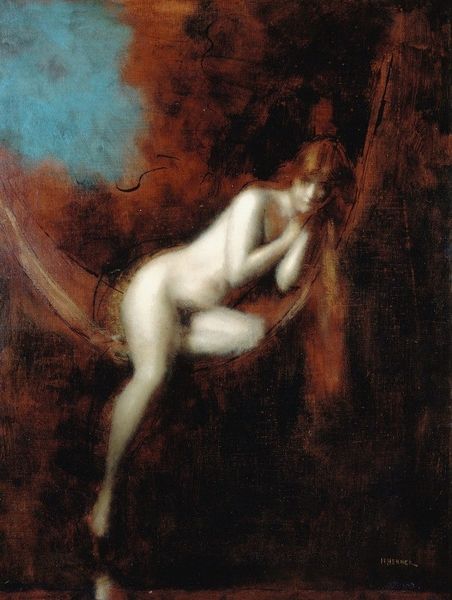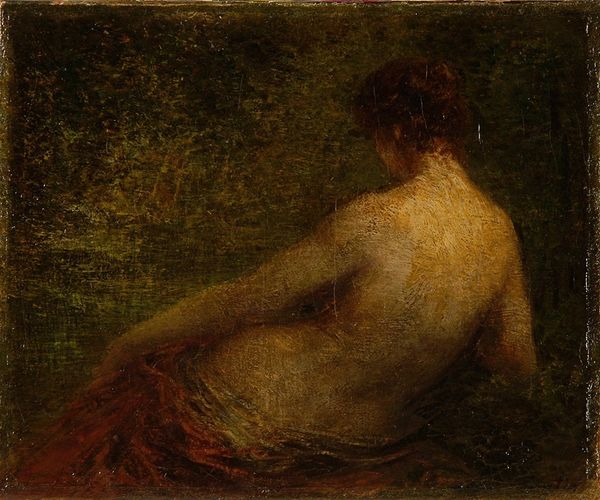
Copyright: Public Domain: Artvee
Curator: Let’s examine Jean-Jacques Henner's *Nymphe Couchée*, painted in 1887, using oil paint. It is remarkable how Henner’s technique elevates the nude to more than just the object of the male gaze. Editor: It's interesting that you bring that up. The stark contrast between the pale figure and the almost oppressive darkness makes the scene quite haunting, even unsettling. What can we take away from it? Curator: Look closely at how he applies the oil paint, building layers upon layers. The darkness isn't just background; it's an active agent, almost consuming the nymph. This act of painting becomes a labor where Henner is both revealing and concealing, presenting the figure as something extracted, or perhaps, discarded by nature itself. Think about the social context: late 19th century France, anxieties about industrialization and alienation from the natural world. Could this nude, rendered almost ghostlike, be a reflection of that? What raw materials went into this oil paint? Editor: I hadn't considered the painting in that way, in terms of labor or anxiety, focusing more on art history and the mythological reference. Are you suggesting that the nymph becomes almost a product of this tension between nature and industrial advancement, rather than the symbol of beauty? Curator: Precisely. This painting doesn't merely represent a mythological figure; it embodies a complex relationship between materials, labor, and cultural unease. It challenges the viewer to see past the idealized form and consider the societal forces shaping artistic creation and our interpretation of it. Think, too, about the pigment itself; ground minerals extracted and refined to create this palette. What value do we assign that process? Editor: It's amazing to see how examining the materiality and the making of the artwork really opens up to new interpretations of the same artwork! I am now intrigued by the use of light in the service of representing contemporary cultural conflicts! Curator: Agreed. By analyzing the materials and process, we understand its relation to consumption, labor, and societal views.
Comments
No comments
Be the first to comment and join the conversation on the ultimate creative platform.

